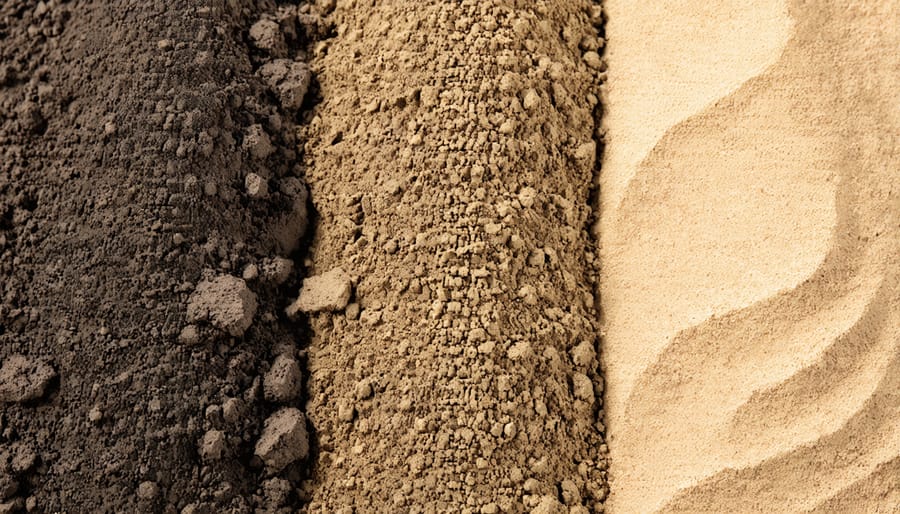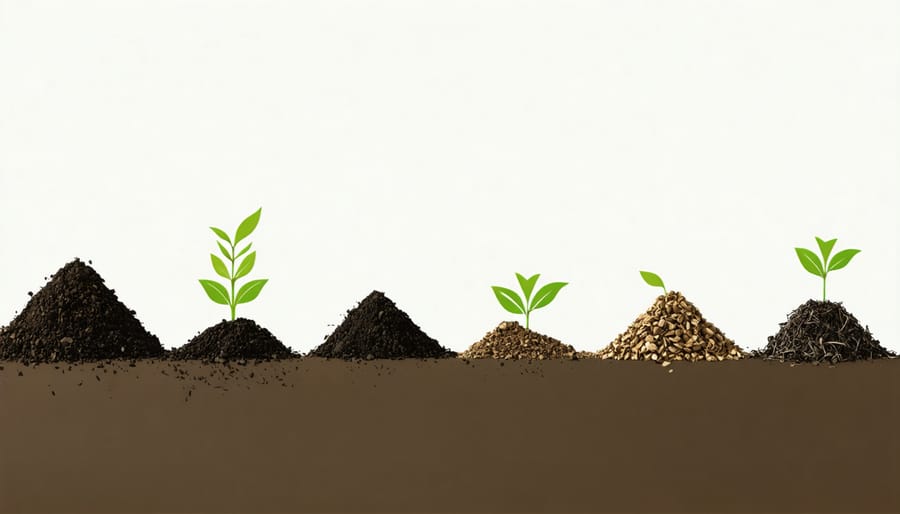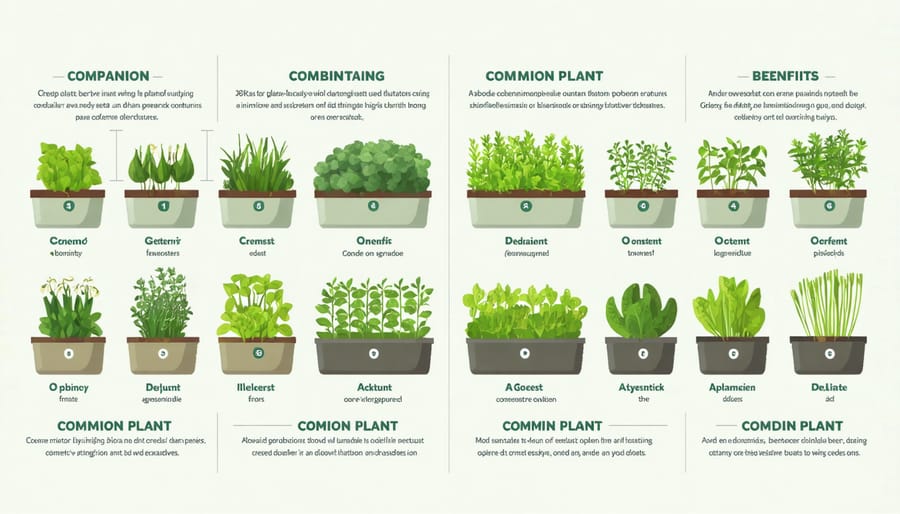Transform your outdoor space through eco-friendly landscaping practices that slash water consumption by 50% while creating a thriving, self-sustaining ecosystem. Replace traditional lawns with native plant species that naturally resist local pests and require minimal irrigation. Install smart drip irrigation systems paired with moisture sensors to deliver precise water amounts exactly when plants need it. Group vegetation by water requirements and sunlight exposure, creating efficient micro-climate zones that maximize resource usage while minimizing maintenance needs. These sustainable approaches not only reduce environmental impact but also cut monthly maintenance costs by up to 60% through decreased water usage, eliminated chemical inputs, and reduced labor requirements. By working with nature rather than against it, sustainable landscaping creates resilient outdoor spaces that flourish with minimal intervention while supporting local biodiversity and protecting precious water resources.
The Foundation of Sustainable Landscaping: Understanding Your Soil
Know Your Soil Type
Understanding your soil type is like getting to know your garden’s personality – it’s the foundation of successful sustainable landscaping. Here’s a simple DIY test to identify your soil: grab a handful of moist soil and give it a gentle squeeze. If it holds its shape but crumbles easily, you’ve got loamy soil – the gardener’s gold! Sandy soil feels gritty and falls apart quickly, while clay soil feels sticky and stays clumped together.
You can also try the jar test: fill a clear jar one-third full with soil, add water, shake well, and let it settle for 24 hours. The layers that form will reveal your soil composition – sand settles first, followed by silt, then clay on top.
Each soil type has its benefits and challenges. Sandy soil drains quickly but needs frequent watering, clay soil retains nutrients well but can become compacted, and loamy soil offers the perfect balance. Once you know your soil type, you can choose plants that will thrive naturally and adjust your watering schedule accordingly, making your landscape more sustainable and easier to maintain.
Remember, healthy soil is living soil – it should have a rich, earthy smell and be home to beneficial organisms like earthworms.

Simple DIY Soil Testing Methods
Understanding your soil’s health doesn’t require expensive lab tests. Here are some simple DIY methods you can use right in your backyard to assess your soil quality.
The Jar Test is perfect for determining soil composition. Fill a clear jar one-third full with soil, add water until it’s nearly full, shake well, and let it settle for 24 hours. The layers that form will show you the proportions of sand, silt, and clay in your soil.
To test drainage, dig a hole about 12 inches deep and 6 inches wide. Fill it with water and let it drain completely. Then fill it again and time how long it takes to empty. Good drainage should take 2-3 hours. If water sits for more than 4 hours, you might need to improve drainage.
For a quick pH test, mix soil with vinegar in one container and baking soda in another. If the vinegar fizzes, your soil is alkaline. If the baking soda bubbles, it’s acidic. No reaction? Your soil is likely neutral.
The Squeeze Test can reveal soil texture. Grab a handful of moist soil and squeeze it. If it holds its shape but crumbles when poked, you’ve got ideal loamy soil. If it stays in a firm ball, it’s clay-heavy. If it falls apart easily, it’s sandy.
Check soil health by burying a clean cotton underwear for two months – more decomposition indicates healthier soil with active microorganisms.
Natural Soil Enhancement Techniques
Composting for Rich Soil
Creating nutrient-rich soil through composting is one of the most sustainable practices you can adopt in your landscaping journey. If you’re new to this eco-friendly approach, our guide to composting basics for beginners will help you get started.
The key to successful composting lies in maintaining the right balance of green and brown materials. Green materials include kitchen scraps, grass clippings, and fresh plant matter, while brown materials consist of dry leaves, twigs, and paper products. Aim for a ratio of roughly 3:1 brown to green materials for optimal decomposition.
Create your compost pile in a shaded area of your yard, either in a dedicated bin or directly on the ground. Layer your materials, keeping them moist but not wet – think of a wrung-out sponge. Turn your pile every few weeks to provide oxygen and speed up decomposition.
Within 3-6 months, you’ll have dark, crumbly compost that smells like fresh earth. Use this black gold to enrich your garden beds, mulch around plants, or brew compost tea for natural fertilization. For the best results, add a 2-3 inch layer of compost to your soil in spring and fall.
Remember to avoid meat, dairy, and oily foods in your compost pile, as these can attract pests and slow down the decomposition process.

Mulching Magic
Mulching is one of the most effective ways to create a sustainable landscape, and it’s easier than you might think! This natural approach to soil protection offers multiple benefits while reducing your maintenance workload.
Start by choosing the right mulch for your needs. Organic options like wood chips, leaves, or grass clippings break down over time, enriching your soil naturally. For flower beds, aim for a 2-3 inch layer of mulch, keeping it about an inch away from plant stems to prevent rot.
Here’s a game-changing tip: create your own mulch by composting fallen leaves and yard waste. This zero-waste approach not only saves money but also reduces your carbon footprint. For vegetable gardens, straw mulch works wonders, helping retain moisture and suppress weeds while adding nutrients as it decomposes.
Don’t forget about living mulch! Ground covers like creeping thyme or sweet woodruff serve as beautiful, functional alternatives to traditional mulch. They protect the soil while adding visual interest to your landscape.
Remember to refresh your mulch annually in spring, but don’t remove the old layer – simply add a thin new layer on top. This practice maintains soil moisture, regulates temperature, and creates a thriving environment for beneficial organisms. For best results, water the soil thoroughly before applying mulch, ensuring your plants get the most benefit from this sustainable practice.
Water-Smart Soil Management
Smart Irrigation Practices
Smart irrigation isn’t just about keeping your garden green – it’s about being a responsible steward of our precious water resources. By implementing effective water conservation strategies, you can maintain a beautiful landscape while significantly reducing your water usage and utility bills.
Start by installing a smart irrigation controller that adjusts watering schedules based on weather conditions and soil moisture levels. These clever devices can cut water waste by up to 50%! Consider using drip irrigation or soaker hoses instead of traditional sprinklers – they deliver water directly to plant roots, minimizing evaporation and runoff.
Timing is everything when it comes to watering. Water early in the morning or late in the evening to reduce evaporation loss. Group plants with similar water needs together, and adjust your watering schedule seasonally. Don’t forget to regularly check for leaks and maintain your irrigation system – even small drips can waste hundreds of gallons annually.
For extra efficiency, collect rainwater in barrels or create a rain garden to naturally capture and filter runoff. These simple steps can make a big difference in both your water consumption and your garden’s health.
Moisture-Retaining Soil Amendments
Keeping your soil moisture-rich doesn’t have to be complicated or expensive. Natural amendments can dramatically improve your soil’s ability to retain water, reducing the need for frequent watering. Compost is your best friend here – mix in well-decomposed organic matter to create tiny spaces that hold water like a sponge. Adding a 2-3 inch layer of mulch on top of your soil works wonders too, preventing water from evaporating while gradually breaking down to enrich the soil.
For clay-heavy soils, consider mixing in coconut coir or peat moss, though coconut coir is more sustainable. These materials create air pockets that help retain moisture without waterlogging your plants. Wood chips and straw are excellent options for larger areas, breaking down slowly while protecting the soil surface.
Here’s a pro tip: Try incorporating vermiculite or biochar into your soil mix. These amendments not only retain moisture but also provide additional benefits like improved aeration and nutrient retention. Remember to work any amendments into the top 6-8 inches of soil for best results, and always choose organic materials when possible to maintain your landscape’s natural ecosystem.
Plant Selection for Soil Health
Native Plants That Love Your Soil
When it comes to sustainable landscaping, choosing native plants is like finding the perfect puzzle piece for your garden. These plants have evolved alongside local soil conditions for thousands of years, making them naturally adapted to thrive in your yard with minimal intervention.
Native plants offer a wealth of benefits that make them ideal for sustainable landscapes. They typically require less water, fertilizer, and maintenance than non-native species because they’re already perfectly suited to your local climate and soil type. Their deep root systems help prevent soil erosion and improve water filtration, while also supporting local wildlife and pollinators.
Think of native plants as your garden’s low-maintenance superstars. They’re resistant to local pests and diseases, which means you can skip the harmful pesticides. Plus, they create a natural habitat that attracts beneficial insects, birds, and butterflies, turning your yard into a vibrant ecosystem.
Ready to get started? Check with your local extension office or native plant society to discover which species will work best in your specific area. They can recommend plants that match your soil type, sun exposure, and moisture conditions.
Companion Planting Strategies
Companion planting is a smart, natural way to boost your garden’s health while reducing the need for chemical fertilizers and pesticides. Think of it as creating plant partnerships where each species brings something valuable to the relationship.
For example, try planting nitrogen-fixing legumes like peas or beans near heavy feeders such as tomatoes or corn. The legumes naturally enrich the soil with nitrogen, which their neighbors need to thrive. Marigolds aren’t just pretty faces in your garden; they help protect nearby plants by deterring harmful nematodes and other pests.
Create beneficial layers by combining tall plants with shorter ones. Deep-rooted plants like comfrey bring up nutrients from lower soil layers, while shallow-rooted herbs can act as living mulch, protecting the soil and retaining moisture.
Some winning combinations include:
– Basil with tomatoes (improves flavor and repels insects)
– Carrots with onions (mutual pest protection)
– Nasturtiums with squash (attracts pollinators, deters pests)
– Rosemary with brassicas (provides natural pest control)
Remember to rotate these plant partnerships each season to prevent soil depletion and maintain a healthy garden ecosystem. This natural approach not only improves soil health but also creates a more resilient and productive landscape.

As we’ve explored throughout this guide, sustainable landscaping isn’t just about creating beautiful outdoor spaces – it’s about nurturing a healthier environment for future generations. By implementing the soil management practices we’ve discussed, you’re not only saving money and resources but also contributing to a more sustainable ecosystem right in your own backyard.
Remember that every small step counts. Start with simple changes like composting kitchen scraps, choosing native plants, or implementing a smart irrigation system. These practices will gradually improve your soil health, reduce water consumption, and create a more resilient landscape that requires less maintenance over time.
The beauty of sustainable landscaping lies in its cyclical nature – healthy soil supports stronger plants, which in turn contribute to better soil quality. As you begin incorporating these practices, you’ll notice fewer pest problems, reduced water bills, and more vibrant plant growth.
Don’t feel pressured to transform your entire landscape overnight. Begin with one area of your yard, experiment with different techniques, and expand your sustainable practices as you become more comfortable. The key is to stay consistent and patient, knowing that your efforts are making a real difference.
Take the first step today by choosing one sustainable practice to implement this week. Your landscape – and the environment – will thank you for years to come.
